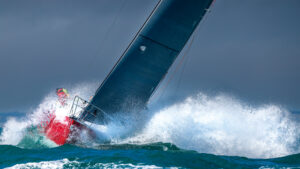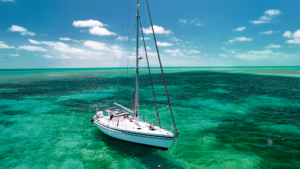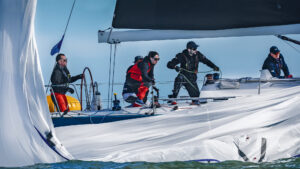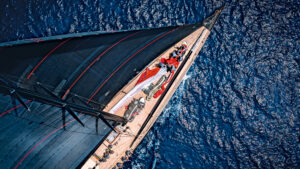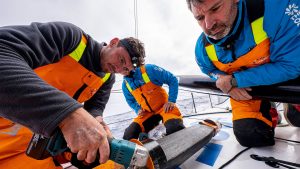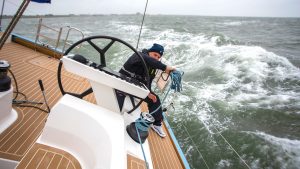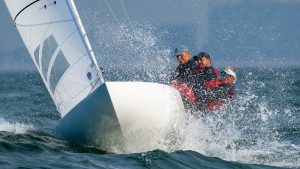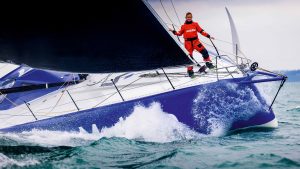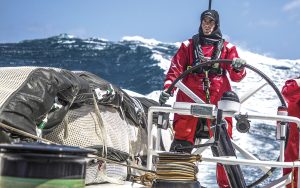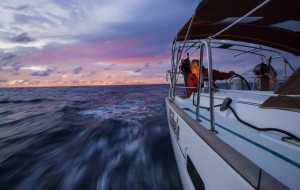Time in a boatyard rarely goes exactly to plan. Investigate beyond where you usually look and you’ll almost always uncover work that wasn’t expected. The trick is to turn that…
expert tips
5 Expert Tips: How to run a succesful offshore campaign on a budget
Lawrence Herbert loves his offshore racing but he and the Corazon crew are campaigning their J/133 on a tight budget. Necessity being the mother of invention, the 28-year-old and the…
Buying a yacht for £100,000-£250,000: Tips and tricks
Visit any of the major boat shows with a view to placing an order and a budget of around £100,000 to £250,000 will put you in the production-built yacht market,…
5 Expert Tips: How to recover from a bad race
You learn more from your mistakes than from your successes. But when you’ve had a bad result, how do you get past the negative emotion and start turning that into…
5 expert tips to help you better understand sailing heel angles
Keelboat sailors obsess about maintaining the optimum angle of heel. According to Chris ‘Twiggy’ Grube, it’s a good obsession to have, and keeping consistently to that ideal heel is a…
5 Expert Tips: Your complete guide to mainsail trimming
Experienced sailor though he may be, Alain Sign has had his hands full getting to grips with the role of mainsheet trimmer in a fleet as competitive as the Cape…
How to use deck chutes for improved spinnaker handling
Paul Larsen was converted to the appeal of deck chutes on a particular day aboard Sir Peter Harrison’s 35m maxi yacht Sojana. “You’d be racing into the leeward mark with…
Expert sailing skills: How to be a great crew boss
Being an effective crew boss relies on good preparation and a great sense of timing, says Annie Lush. “The role basically comes down to organising manoeuvres, so it’s about having…
How sailors plan sleep routines at sea: An expert guide
Dee Caffari knows the importance of sleep to any offshore sailor, whether you’re racing solo, double-handed or fully-crewed. “Most sailors don’t understand how the lack of sleep can affect your…
5 expert tips: Jack Bouttell on repairing your boat mid-ocean
In the 50-year history of The Ocean Race (ex-Whitbread/Volvo), Leg 3 of the 2023 edition from Cape Town, South Africa through the Southern Ocean to Itajaí, Brazil, was the longest…
An expert guide to safe line handling at sea
Boats may have nine lives, but a sailor is not supposed to have nine fingers. Every year, however, we hear of instances of crushed hands, lost fingers, and major damage…
5 expert tips: Shorthanded mainsail reefing
The double-handed team of Deb Fish and Rob Craigie have got mainsail reefing down to a fine art. “Even when we’re really familiar with each other and we know our…
Top helming tips to keep your yacht balanced
According to Andy Beadsworth, when you’re helming the boat you’re not so much steering as ‘applying load to the tiller’. “Sometimes the boat heels over and the load comes on…
Flying high: what Pip Hare did next
We hit a wave, the bow bouncing into the air. The roar reverberating from inside the covered cockpit intensifies and I look out of the bubble window to a wall…
Expert tips: How to win the start
Robert Scheidt always used to start out of the middle of the line. That was in the days when he was the stand-out talent in the Laser single-handed dinghy, winning…
Weather forecast accuracy – how much can you really trust a forecast?
Weather forecast accuracy will always be a hot topic of debate. As a forecaster I’ve seen the accuracy of models improve greatly over the last couple of decades, but so…
Masterclass: Expert sail handling on larger yachts
It’s only really developments in sail handling technology that have allowed the size of boats to increase so much: we’ve been building yachts of 60ft for decades, but they often…
How to keep calm under pressure
After sailing a brilliant qualifying series during the Tokyo Olympic Games earlier this summer, a moment of indecision put Anne-Marie Rindom’s grip on the gold medal in jeopardy. But the…
Sailing downwind: Expert tips to improve your helming
Carolijn Brouwer is a top talent, having been to the Olympic Games in three different classes (470, Europe and Tornado catamaran), and more recently raced extensively offshore, there are few…
15 things you should know when planning an Atlantic crossing
10 things to remember if you're planning to sail across the Atlantic





